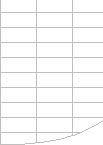Status Bar Shows “CALCULATE”
There are six known conditions in which the status bar will show
CALCULATE:
- The Calculation Option has been set to Manual and the workbook
contains uncalculated formulae. Try setting calculation to Automatic
(Tools-->Options-->Calculate). Note that Excel sets the calculation
mode from the first workbook opened in a session: when you open
two workbooks, one saved in manual mode and one saved in automatic
mode, they will both have the calculation mode of the first workbook
opened.
- The Iteration Option is turned on and the workbook contains circular
references. Check that turning off Iteration (Tools-->Options-->Calculation)
and pressing F9 shows "Circular Reference" in the statusbar.
- You are using Excel 2000 without the SR1 update and have a user-defined
function that attempts to define a name and depends on a volatile
function: see MSKB
Q248179
- You have hit one of Excels limits for tracking dependencies.
- You are using Excel 2007 or later and have set Workbook.ForceFullCalculation
to True
- You are using Excel 2013 or later and have multiple windows open.
See my
blog post excel 2013 sdi bug calculate in status bar strikes again
Dependency Tree Limits
There are two limits to the number of dependencies that Excel versions
prior to Excel 2007 can track before it must do full calculations
instead of recalculations.
- The number of different areas in a sheet that may have dependencies
is limited to 65,536.
- The number of cells that may depend on a single area is limited
to 8K.
After the workbook has passed these limits, Excel no longer attempts
to recalculate only changed cells. Instead, it recalculates all cells
at each calculation. These limits saves the substantial amount of
memory required for the dependency trees. When this happens the status
bar permanently shows “CALCULATE” for all open workbooks even after
closing the main workbook, until you close and reopen Excel.
If you find that recalculation is taking
longer than full calculation, or the time taken to update the dependency
tree at each change is too large, you can force each calculation to
be a full one using Workbook.ForceFullCalculation from VBA.
I do not know of a way of counting the number of dependencies, so
it is not easy to work out how to get below the limit, but:
- Large numbers of dependencies are usually caused by many formulae
referencing large ranges using functions like OFFSET, INDEX, and
the Lookup. You can reduce the number of dependencies by reducing
the use of these functions, and also by reducing the size of the
ranges they refer to. If you reduce the number of dependencies below
the limits you have to save the workbook, close and restart Excel
before Excel recognises that the number of dependencies has fallen
below the limits.
- Excel 2002 allows you to do a full recalculation with dependency
tree rebuild, but this does not alter the limits.
- When you have exceeded the dependency limitspressing F9 will cause
a recalculation even when in Automatic mode.
Because there are other conditions that can cause "Calculate"
to appear in the status bar, test for the other conditions::
- Turn off Iteration, press F9 and look for "Circular Reference"
in the statusbar.
- Press Ctrl/Alt/F9 to do a full calculation. If you have hit the
limit the status bar will show the calculation % climbing to and
reaching 100%, and then being replaced by "Calculate"
For Microsoft's official view on the dependency limit see MSKB
Article Q243495 "Calculate Message Remains in Status Bar
If 65,536 Formula References"
|








